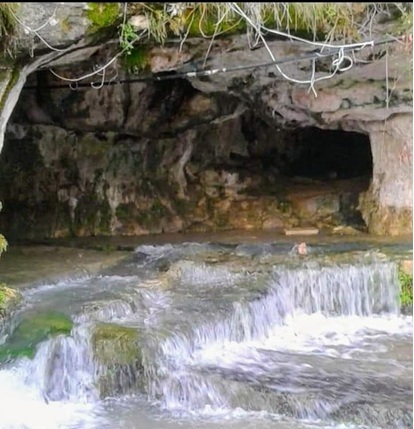The Cave of Beit al-Wadi, which is a turning point between several ancient historical ages, is located 18 kilometers north-east of the city of Al-Dreakish in the most beautiful green area among a group of fresh springs.
The cave is named after the village in which it is located, “Beit al-Wadi.” It deserves a lot of recognition and attention, because its stalagmites, stalactites, abundant spring, and large space are among the most beautiful discoveries in Syria so far.
The “Beit Al Wadi” cave is located at the bottom of the two mountain slopes in the village of “Beit Al Wadi” of “Dweir Raslan” in “Al-Dreakish.” This cave is an important tourist destination for its unique natural and structural advantages.
Its large entrance brings out spring water, which originates from within it and irrigates eleven villages, including, “Dweir Raslan”, “Bashamsha”, “Al-Muhayliba”, “Bamnah” and Ein Baluj, and when moving forward within the entrance about 200 meters we reach two other entrances, one is with spring water, the other is dry.
When walking through the dry entrance, the stalagmites and stalactites appear in each part of the cave in the midst of a large internal space, interspersed with small passages spread on the inner sides, and the cave is made up of layers.
The Cave of Beit al-Wadi is one of Syria’s most prominent and most important caves because it represents a rare historical and natural treasure made by nature long ago. Its internal and external beauty enchanted all visitors to it until it was named “Jaita al-Surya,” a resemblance to the remarkable Jaita in Lebanon, which became a tourist destination for thousands of tourists every year.
Amal Farhat

